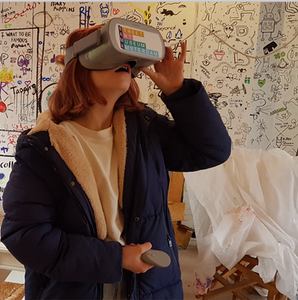The outbreak of COVID-19 cases all around the globe, with the latest figures revealing over 240,000 reported cases in more than 50 countries, has put humanity in caution mode. Everybody needs to compromise in order to avoid mass contamination because, even though the virus does not offer most people the risk of death, the lack of care of few can cost the lives of many others. With this in mind, many countries are adopting social isolation as a tool to control the transmissions, which is resulting in a big transformation socially and economically on a global scale.
The Piazza del Duomo before and after the pandemic of COVID-19
One of the industries most affected by the new coronavirus is travel and tourism. Museums and other cultural institutions too are majorly affected by the implemented measures to avoid spreading the virus. Across Asia, Europe and already some places in America, cultural organizations and tourist destinations are closing down to visitors. In Amsterdam, all places that provoke social gatherings (with few exceptions) are going to remain closed, at least, until the 6 of April.
We live in a time where the advance of technology has absolutely changed our life dynamics and the speed of human progress, for bad and for good. While we can all agree that it is great to be able to travel around the globe and that the Internet is between the greatest inventions of humankind, our impact on the planet, from CO2 emissions to trash production, has never been so dramatic. The risk of setting off irreversible chain reactions beyond human control are high in times like this, from quickly spreading diseases to massive natural disasters.
And where should museums and other heritage institutions stand in this context? Topics such as heritage preservation and the role and future of museums in times of crisis have been long and largely discussed. COVID-19 is not even close to being one of the biggest challenges museums have faced since its conception but it is an interesting one and we can use the quarantine time to put things into perspective. Are museums prepared? Is it possible to keep reaching their original missions in such situations?
In China, where the virus originated and made so far the biggest impact, the National Cultural Heritage Administration held an emergency meeting in response to the number of museums and historic sites on lockdown. In response, the government strongly encouraged museums to promote new technology and inheritance of the country’s cultural heritage. In fact, the government deemed it an urgent matter to offer “comfort and escape to the Chinese people” through immersive cultural experiences.
As a result, China has led the way in making museums available through digital means on a national scale. According to Jing Travel, “From Karamay Museum in far western Xinjiang province to Shanghai’s Museum of Revolutionary History, 100 Chinese institutions have responded promptly to NCHA’s directive by making their publicly available through online exhibitions using a centralized portal”.(1)

Map from the Chinese portal showing the museums with available online exhibitions
Many museums around the globe are also using this moment to spread about their digital platforms or develop new tools that will provide access to their collections and knowledge remotely. Although digital tools might be the alternative to face challenges such as COVID-19, these institutions that have long depended on the ticket sales will inevitably face financial problems. This will probably mean a future change in the way museums revenue, with new creative solutions other than tickets, memberships, and on-site retail.
At SAMA we have, for the last two years, decided to invest most of our efforts and resources into the digitalization of our collection and information. Due to the fact that SAMA deals with Street Art, an inherent temporary art form, the museum always functioned with the eminent sense of loss and therefore came to the understanding that this is a natural process. Besides that, tickets are a very small percentage of the museum revenue, which makes the transition to the online world way easier and natural.
VR video is one of the digital tools SAMA uses to share the collection
For us, as it might be the case for many other institutions in the future, the digital world is the most suitable and sustainable way to guarantee the propagation of our collection together with the stories and important messages behind it. During uncertain times, it is essential for cultural organizations to consider how they can best prepare and adapt in an agile form, in order to remain active and relevant. The new coronavirus brought a lot of fear and vulnerability to cultural institutions, but challenges like this can unfold new solutions and creative ways to reach potential visitors and audiences remotely.










